| |
Conference venue |
|
Committees
Abstract & Paper
Registration
Programme
Organizations
Venue
Accommodation
How to get there
Contact
Home |
The conference will be held at San Gaetano Cultural Centre, Via Altinate n.71, Padua.
The venue has been the City Court of Padua for 140 years, after which is has been renovated to become a large cultural centre that also houses the Municipal Public Library.
Click here to view the location on the map.![]()
|
|
| |
What to see in Padua
|
|
| |
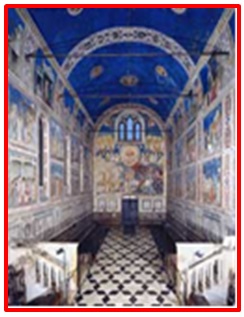 Padua's treasure is the Scrovegni Chapel, Giotto's masterwork; the adjacent Eremitani Church, built at the turn of 13th century, has a wonderful wooden ceiling, due to Fra' Giovanni, and many monumental tombs.Badly damaged by bombing in 1944, it keeps in the Presbytery some frescoes by Guariento (1368 1370) and some juvenile masterpieces by Andrea Mantegna (1448-1457) in the Ovetari Chapel. Padua's treasure is the Scrovegni Chapel, Giotto's masterwork; the adjacent Eremitani Church, built at the turn of 13th century, has a wonderful wooden ceiling, due to Fra' Giovanni, and many monumental tombs.Badly damaged by bombing in 1944, it keeps in the Presbytery some frescoes by Guariento (1368 1370) and some juvenile masterpieces by Andrea Mantegna (1448-1457) in the Ovetari Chapel.
|
|
| |
 Not far away, separating Piazza delle Erbe from Piazza della Frutta, stands Palazzo della Ragione, commonly called Il Salone, a building of 1218, rebuilt in 1306 by Fra' Giovanni degli Eremitani. A busy market occupies daily the ground floor and the adjoining Piazze. The upper floor is one vast hall (81 mt long, 27 mt wide and 27 mt large). On the walls is an interesting cycle of frescoes of religious and astrological subjects (1425-1440). Not far away, separating Piazza delle Erbe from Piazza della Frutta, stands Palazzo della Ragione, commonly called Il Salone, a building of 1218, rebuilt in 1306 by Fra' Giovanni degli Eremitani. A busy market occupies daily the ground floor and the adjoining Piazze. The upper floor is one vast hall (81 mt long, 27 mt wide and 27 mt large). On the walls is an interesting cycle of frescoes of religious and astrological subjects (1425-1440).
|
|
| |
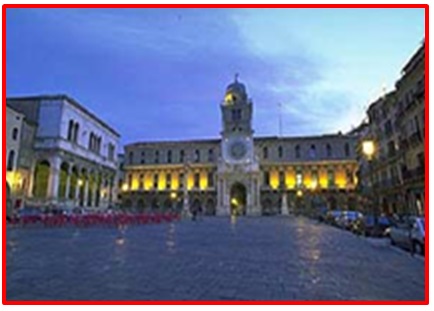 The nearby Piazza dei Signori is attractively enclosed by buildings. On the W side, Palazzo del Capitanio (1599-1605) incorporates the Torre dell'Orologio with its astronomical clock dating from 1344. The arch is by G.M. Falconetto. Beyond the Arco dell'Orologio is Piazza Capitaniato with the building of the arts faculty, the Liviano. It incorporates the Sala dei Giganti with frescoes dating from the 16th century. The nearby Piazza dei Signori is attractively enclosed by buildings. On the W side, Palazzo del Capitanio (1599-1605) incorporates the Torre dell'Orologio with its astronomical clock dating from 1344. The arch is by G.M. Falconetto. Beyond the Arco dell'Orologio is Piazza Capitaniato with the building of the arts faculty, the Liviano. It incorporates the Sala dei Giganti with frescoes dating from the 16th century.
|
|
| |
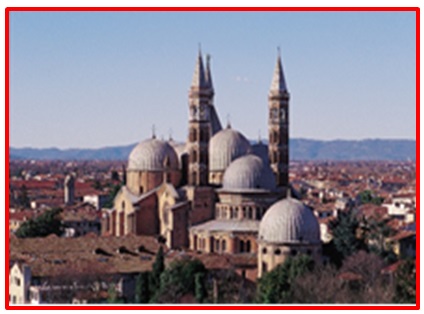 Padua is also a pilgrimage city, millions of pilgrims come here every year to visit the "Basilica di Sant’Antonio", where the grave of St. Anthony is preserved. Padua is also a pilgrimage city, millions of pilgrims come here every year to visit the "Basilica di Sant’Antonio", where the grave of St. Anthony is preserved.
|
|
| |
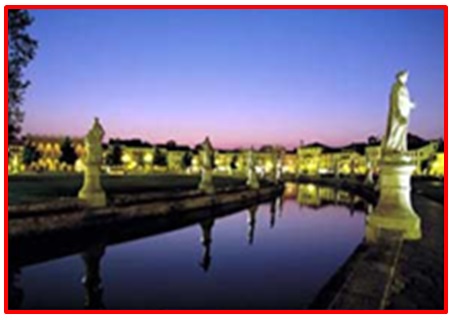 'Prato della Valle' is a huge oval form island surrounded by a channel, in the middle of one of Europe's largest square. There are many sculptures on the channel sides. These sculptures are representations of culture and art personalities. 'Prato della Valle' is a huge oval form island surrounded by a channel, in the middle of one of Europe's largest square. There are many sculptures on the channel sides. These sculptures are representations of culture and art personalities.
|
|
| |
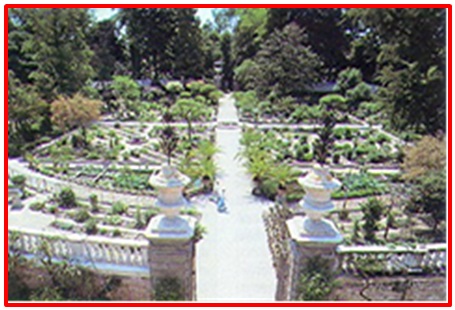 Between the 'Prato della Valle' and the Basilica there is the "Orto Botanico" (1545), with exotic flowers and plants. The Botanical Garden of Padua is the original of all botanical gardens throughout the world, and represents the birth of science, of scientific exchanges, and understanding of the relationship between nature and culture. It has made a profound contribution to the development of many modern scientific disciplines, notably botany, medicine, chemistry, ecology, and pharmacy. For this reasons from 1997 is under the UNESCO patronage. Between the 'Prato della Valle' and the Basilica there is the "Orto Botanico" (1545), with exotic flowers and plants. The Botanical Garden of Padua is the original of all botanical gardens throughout the world, and represents the birth of science, of scientific exchanges, and understanding of the relationship between nature and culture. It has made a profound contribution to the development of many modern scientific disciplines, notably botany, medicine, chemistry, ecology, and pharmacy. For this reasons from 1997 is under the UNESCO patronage.
|
|
| |
For more details and pictures please check the official Padova website: http://www.turismopadova.it/en
|
|
| |
Tourist information:
Information and free city maps are available at Tourist Information Office, in Galleria Pedrocchi, behind Caffè Pedrocchi, near Palazzo Bo and City Hall.
Opening hours: Monday - Saturdays 9am-1.30pm; 3pm-7pm. Closed on Sundays.
Phone 049 8767927 email: infopedrocchi@turismopadova.it
Download touristic information here
|
|
| |
Useful links:
• it.wikipedia.org/wiki/Padova
• http://www.padovaincoming.it/en/
• http://www.welcomepadova.it/home.php?setlan=en
• http://www.cappelladegliscrovegni.it/index.php/en/
|
|